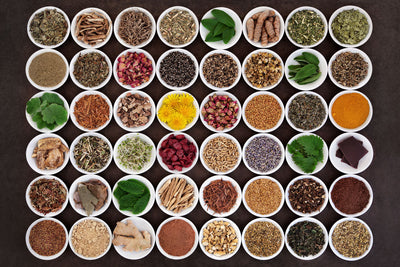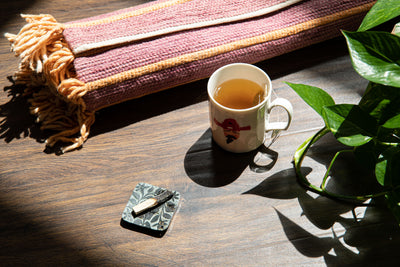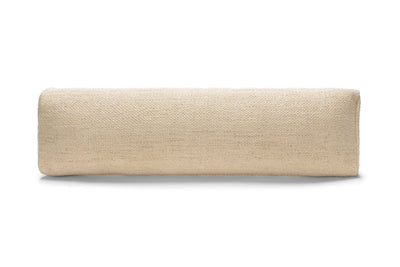An Ayurvedic Thanksgiving Dinner Your Digestive System Will Thank You For
The elaborate spread of Thanksgiving dinner is hands-down the highlight of this November holiday. The tradition of gathering around a beautifully decorated table to share gratitude and exquisite food has been celebrated for centuries. The bountiful feast might tempt you to overeat, and with the typical Thanksgiving dishes, your body will feel the effects of this for days. As an alternative option to your typical Thanksgiving dishes, we are sharing three of our favorite Ayurvedic recipes that will leave you feeling balanced and satisfied instead of feeling bloated and tired after your meal.
These recipes contain the six tastes of Ayurveda: sweet, salty, sour, pungent, bitter, and astringent. According to Ayurveda, each flavor corresponds to a specific area of the tongue, which stimulates a particular organ. It is important to activate all organs equally so that the body can function properly. One method of stimulating the internal organs is by activating the taste buds corresponding to that organ. Therefore, when a meal contains all six tastes, it can help restore the body to balance.
Appetizer: Butternut Squash Soup with Fennel, Ginger & Garlic
Recipe by John Immel
According to Ayurvedic teachings, vegetable soups are a great way to begin your meal. Butternut squash (the main ingredient of this soup) nourishes all tissues of the body and facilitates the elimination of waste, making it very supportive and nourishing during Fall. This supportive soup reduces Vata and Pitta while increasing Kapha. It may be sweet, and comforting, but it has strong digestive effects nonetheless.
The combination of ingredients in this soup, specifically ginger and sweet fennel, compensate for the heavy qualities of the butternut squash, making it an easy-to-digest dish suitable for all three doshas. Ginger, garlic, and onion also provide great benefits for the immune system which is much needed during the Fall season.
Ingredients (Serves 4)
- 1/4 tsp black pepper
- 4 cup butternut squash
- 1 tsp fennel seeds
- 2 cloves of garlic
- 2 tbsp of ghee
- 1/2 inch of fresh ginger
- 1/2 whole lime
- 1/4 tsp mineral salt
- 4 cups water
- 1/2 cup yellow onion
Preparation
- Roast the butternut squash in the oven at 350 degrees for 30 minutes. Remove and let cool. The skin will peel off easily with a potato peeler after roasting. When it cools, chop the butternut squash into 1-inch cubes.
- Heat 2 tablespoons of ghee in a large stockpot. Add diced onions and saute. Chop ginger and garlic, and toss them in the pot when your onions begin to brown. Add salt, pepper, and fennel seeds. Continue frying for another thirty seconds, taking care not to burn the garlic. Now, add the butternut squash cubes, and 4 cups of water. Bring to a boil.
- Reduce the heat to a simmer. Cook for about 20 minutes. Then mash with a potato masher, or puree in a blender. Squeeze the juice of half a lime into the finished soup.
-
Serve hot with a hearty hunk of bread!
Main Course: Wild Rice Stuffing
Recipe by Kate O’DonnellThis Wild Rice Stuffing makes a great main course and will probably be the highlight of your dinner. It is hearty and grounding just like Thanksgiving. The cooked apples in this recipe are easy to digest and beneficial to our gut. Cranberries’ pungent taste heats up the digestive system and encourages the secretion of digestive juices which is great as wild rice demands more energy to be digested due to its high protein and fiber content.
Ingredients (Serves 8)
- 6 cups sprouted-wheat bread cubes (about 6–7 slices)
- ¼ cup of vegetable broth
- 1 cup wild rice
- ¼ cup plus 2 tsp ghee, separated
- 2 cups diced celery (about 4 stalks)
- 2 cups diced fennel (1–2 bulbs)
- 2 cups diced apples (1–2 apples)
- 2 tbsp finely chopped fresh sage
- 1 tsp finely chopped fresh thyme
- 1 tsp salt
- ½ tsp black pepper
- ¼ cup unsweetened applesauce
-
½ cup diced, fresh cranberries
Preparation
- On a baking sheet, spread bread cubes and leave on the counter overnight to dry, or heat oven to 350° and place baking sheet on top rack, baking until bread dries about 15 minutes.
- In a large saucepan, boil broth. Add rice, and cover; reduce heat to low, and simmer until grains soften and begin to split, 75 minutes. Remove from heat and keep covered.
- Heat oven to 400°.
- In a large frying pan over medium heat, melt ¼ cup ghee. Add celery and fennel, and sauté until vegetables are translucent, 5 minutes. Add apples and sauté, stirring, 5 minutes. Add sage, thyme, salt, and black pepper; cook until herbs begin to brown, 2–3 minutes.
- Grease a glass 9x13-inch baking dish with the remaining 2 tsp ghee. In a bowl, combine bread cubes, rice, fennel-and-apple mixture, applesauce, and cranberries; pour stuffing into greased baking dish and cover with aluminum foil. Bake until heated through, 20 minutes. Remove foil and bake until top browns, 10–15 minutes.
Dessert: Sesame Honey Ladoos (balls)
 Recipe by Divya Alter
Recipe by Divya Alter
No Thanksgiving meal would be complete without a dessert. These sesame balls are very digestive and suitable for the whole family, including children and the elderly. Sesame is highly nutritious, especially with its abundance of calcium. It calms the nervous system and enhances immunity while nourishing all tissues. Cardamom is not only refreshing for the mouth, it also dilutes the mucus and facilitates digestion. It is one of the best spices to help in cases of asthma, pharyngitis, or a mucus-filled cough.
Ingredients (Serves 4)
- 1/2 cup + 2T sesame seeds (hulled/white)
- 2/3 cup almond meal/flour (blanched almonds) or the pulp from making almond milk
- 3/4 tsp cardamom powder
- 1/2 tsp vanilla extract
- 1/2 tsp lime or orange zest (optional)
- pinch of Himalayan salt
- 1/4 cup raw honey* (local if available)
- In a small skillet or sesame toaster, dry roast the sesame seeds over medium-low heat until lightly tanned. Shake or stir frequently so as not to burn and for even roasting. About 3 minutes or so.
- In a food processor, grind the seeds (remove the 2T for the finishing touches) into a gritty powder. If using almond pulp versus flour add in the pulp as well. You can also add the cardamom, vanilla, salt, and zest at this time or after transferring it to the mixing bowl.
- Transfer the ground sesame seed to a mixing bowl, if using almond flour/meal, mix it in at this time. Along with the spices, if they were not added in earlier. Once the dry ingredients are mixed together, slowly mix in the honey. Keep mixing it with a spoon, until it is all incorporated. It takes a little bit of time to get a sticky consistency so the ball shape will hold up. We found a 1/4 of honey to be the perfect amount. You may want to add the honey in batches as more or less could be required for your batch.
- With your hands, roll about a heaping teaspoon of the mixture into 1-inch balls. You can also rub your hands with a little ghee or coconut oil prior to making the balls so they are less sticky from the honey.
- Once you have about 12 rolled balls, coat them in the remaining 2T of toasted sesame seeds and serve.
Notes:
- Sesame seeds are not compatible with the digestive process when served with milk or eggs.
- The recipe does not call for salt, but you can add a pinch to balance the sweetness
- Divya recommends crystallized honey. If you don't have crystallized honey then regular honey works great.
- Cinnamon is a good seasonal substitute for cardamom or even nutmeg. If using nutmeg reduce the quantity as nutmeg is strong and very heating. Or combine all 3 spices for variation
- If you are experiencing any pitta imbalances, like excess heat in the body, enjoy this treat as a “once in a while” snack
-
You can also try lightly toasting the cardamon to freshen it up a bit. The same can be done with almond flour.
If you tend to struggle with digestive issues or you simply want to give your digestion some extra support during the holiday season, we recommend our collection of yoga mats that assist with digestive heath.
- The harda plant is a well-respected Ayurvedic plant known for its potent digestive and anti-inflammatory effects besides promoting memory retention, focus ability, and lowering blood sugar levels.
- Turmeric is well-known to be a highly effective antioxidant, helping to clear the body’s systems of free radicals while annatto seed is antimicrobial, high in antioxidants and calcium, boosts the skin's radiance, and promotes wound healing.
We hope these Ayurvedic recipes inspire you to create an intentional Thanksgiving dinner, leaving you feeling grounded and satisfied this holiday season. Please share your Thanksgiving Ayurvedic inspired dishes with us using hashtag #benndinthewild.

















